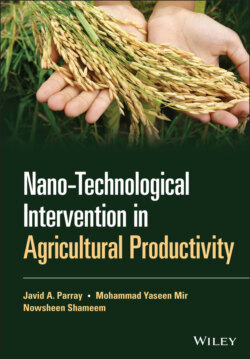Читать книгу Nano-Technological Intervention in Agricultural Productivity - Javid A. Parray - Страница 44
2.1.1 Ecotoxicity of Fullerenes
ОглавлениеC60 fullerenes, beginning with the seminal work of Oberdorster [16], have been among the first engineered nanoparticles to be studied in ecotoxicity. In the first study on fullerene toxicity [16], Oberdorster showed that low C60 (0.5 mg/l) concentrations could result in oxidation and enzyme changes. The C60 model influences the ecotoxicity of C60. Bacterial studies of C60 fullerenes showed reduced growth and breathing with Escherichia coli and Bacillus subtilis [17, 18]. Other reports demonstrated a responsive cellular property impaired by low nC60 concentration [14] in bacterial membrane composition and fluidity. In the presence of nC60, Pseudomonas putida reduced its unsaturated fatty acids and augmented cyclopropane fatty acids to defend the bacterial membrane against oxidative stress.
Changes in the composition of the population revealed growth barriers to some indigenous microbial organisms. They showed that the ecotoxicological effects of nC60 could occur within the highly complex medium, including soils. Without previous suspension in water, the maximum concentration of C60 was added in dry conditions. The lack of any ecotoxicological effects may suggest that considering higher concentrations, the bioavailability of C60 in the latter experiment is lower [6].
Fullers (1 μM) combined with UV light have shown a substantially larger inactivation (100% increase) of viruses than UV light alone. In a cytotoxicity analysis on human cell lines [3], fullerols are less toxic than aggregate non‐derivatized fullerenes (nC60). C60‐NH2 with a positive charge hindered the growth and reduced the absorption of substrates. This damage has been recorded in two bacterial species (E. coli and Shewanella oneidensis), at a concentration of 10 mg/l, on the cell structures (cell walls and membranes) [19]. The same study showed moderate to no adverse effects for neutrally charged C60 and C60‐OH [20].
